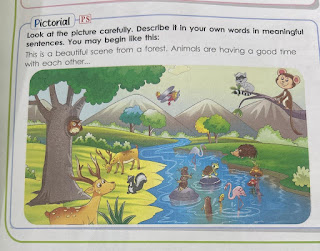IDPS Social Science
IDPS SOCIAL SCIENCE
✅ Tick (✓) the correct answer
-
Mountains spread over ________ per cent of the Earth's total land area
Answer: a. 20 -
The ________ Plateau is the world's highest and largest plateau
Answer: b. Tibetan -
Most civilizations come up along the banks of ________ in the plains
Answer: a. rivers -
A majority of deserts are located towards the ________ side of the continent
Answer: b. western -
A river forms loops or meanders in its ________ course
Answer: b. middle
✍️ Write True or False
-
The Alps are an example of young mountains.
Answer: True -
The Bolivian Plateau is located in South America.
Answer: True -
It is difficult to construct airfields and roads in plains.
Answer: False -
Most deserts have a lot of vegetation.
Answer: False -
During the upper course, the speed of a river is very slow.
Answer: False
✍️ Write short answers
-
Write the names of two old mountains.
Answer: The Aravallis and the Appalachians -
Write the names of two deserts located in Africa.
Answer: The Sahara Desert and the Kalahari Desert -
Describe a day in the life of someone living in a desert. What challenges might they face and how might they overcome them?
Answer:
Someone living in a desert faces hot days and cold nights, along with dust storms. Water is scarce, and very few crops grow due to low rainfall. They might overcome these challenges by using water carefully, growing drought-resistant crops, and wearing protective clothing to handle extreme temperatures.
✍️ Write long answers
-
Differentiate between old and young mountains.
Answer:
Young mountains like the Himalayas and the Alps have high peaks and sharp slopes. They are newer and still rising. Old mountains like the Aravallis and Appalachians are worn down due to erosion and weathering, so they are lower and more rounded. -
Write about the three courses of a river.
Answer:-
Upper course: The river starts in the mountains. It flows fast and cuts deep channels, forming features like canyons and waterfalls.
-
Middle course: The river enters the plains, slows down, and forms loops called meanders.
-
Lower course: The river becomes very slow and deposits silt at its mouth, forming a delta before joining the sea or lake.
-


Comments
Post a Comment